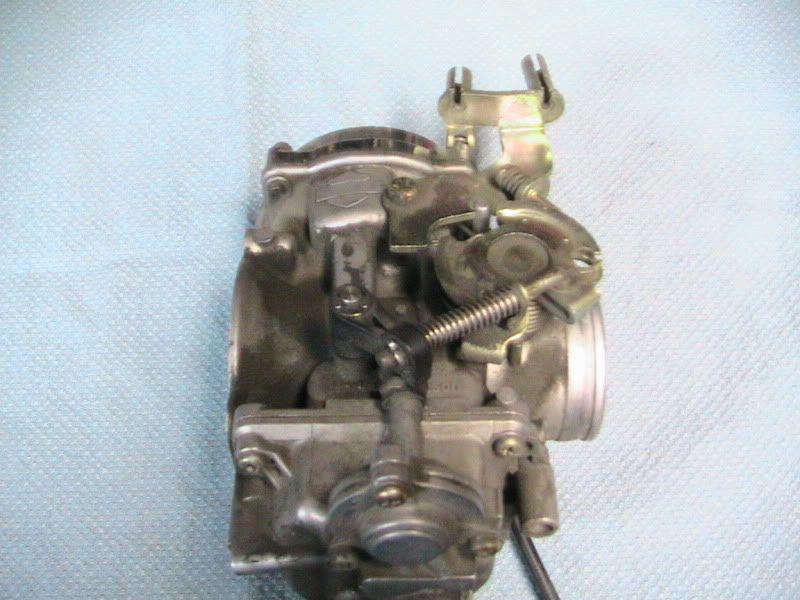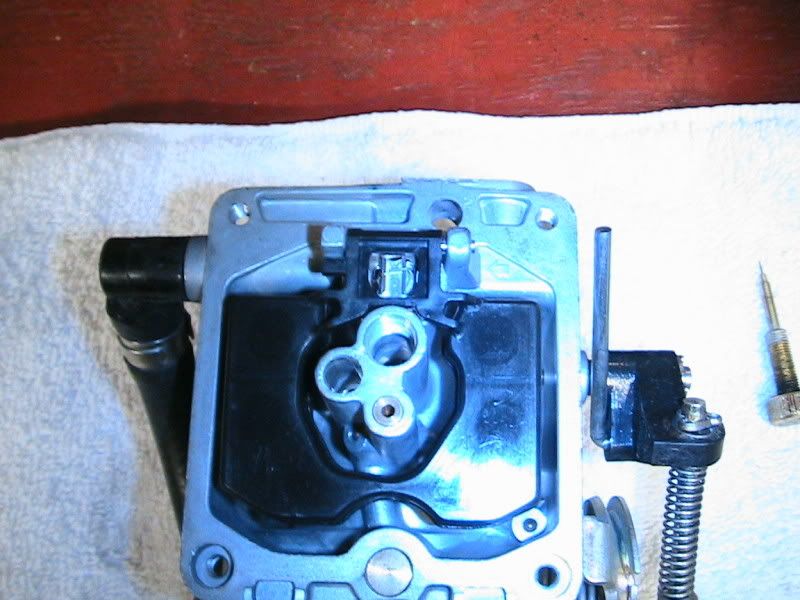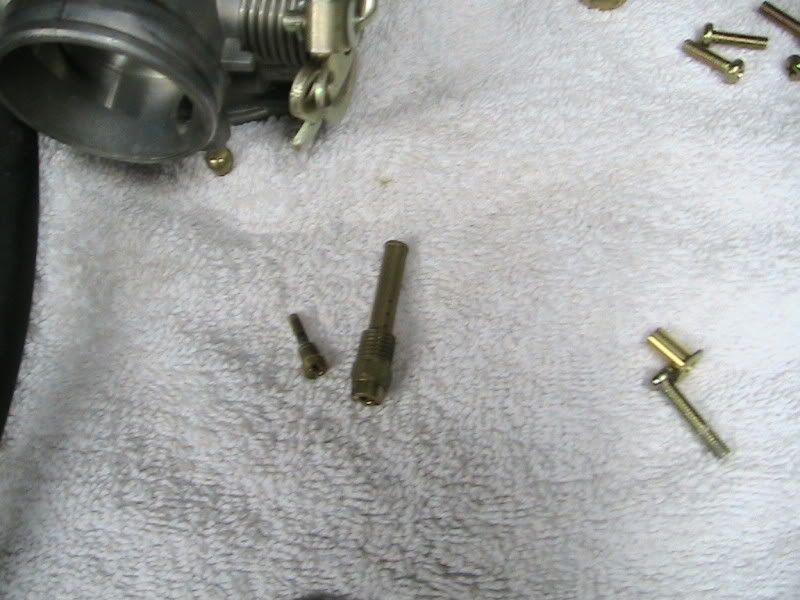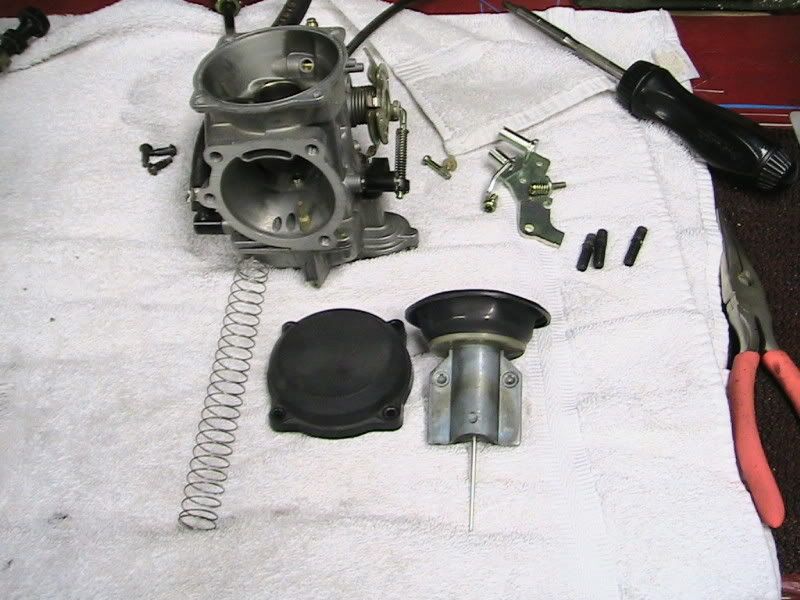Rebuilding your CV40 carb isn't rocket science. It's simply a matter of taking the carb apart, cleaning items that are prone to poor performance if exposed to dirt for decades and rejetting it properly upon reassembly. Float adjustment only has to be set of it's messed with, you hit the float and bend the tab, or the platic float develops a leak and becomes heavy. One other reason would be is if the needle were bad and needed to be replaced, and in this case, that happened. Start with your typical, CV40 carb. The Keihin CV40 was introduced in 1988 on the XL models, however did not originally have an accelerator pump. 1989 to 2006 models did. This is your typical CV40 carb. This model is a 1992. (Special thanks to LilJo!!)
![Image]()
![Image]()
![Image]()
![Image]()
Tools needed will be:
1.) Medium straight blade screwdriver
2.) Medium phillips screwdriver
3.) Small straight blade screw driver
4.) 8mm wrench
5.) pick
6.) can carb cleaner (2+2 is my favorite flavor)
7.) Thread lock red (For fuel elbow replacement only.)
8.) 9/16" wrench
9.) fuel elbow removal tool, or a vice, if replacing the fuel elbow.
When you take the bowl off, you'll see the flat, main jet, pilot jet and needle in place. The seam of the float should be about level with the side of the carb casting, or just a tad below it.
NOTE ARROW AT LEFT OF LEFT FLOAT PIN TOWER. YOU NEED TO PRESS THE PIN TO THE RIGHT. IF NOT, YOU'LL BREAK THE TOWER, AND THE CARB IS JUNK!! You can just see the little arrow, pointing to the right, cast into the carb body.
![Image]()
Remove your jets using a good screwdriver, and the appropriate size. If not, you can strip them (Brass is soft) and then you have issues.
![Image]()
Not the larger one is the MAIN JET still screwed into the EMULSION TUBE. The smaller jet is your PILOT JET.
![Image]()




Tools needed will be:
1.) Medium straight blade screwdriver
2.) Medium phillips screwdriver
3.) Small straight blade screw driver
4.) 8mm wrench
5.) pick
6.) can carb cleaner (2+2 is my favorite flavor)
7.) Thread lock red (For fuel elbow replacement only.)
8.) 9/16" wrench
9.) fuel elbow removal tool, or a vice, if replacing the fuel elbow.
When you take the bowl off, you'll see the flat, main jet, pilot jet and needle in place. The seam of the float should be about level with the side of the carb casting, or just a tad below it.
NOTE ARROW AT LEFT OF LEFT FLOAT PIN TOWER. YOU NEED TO PRESS THE PIN TO THE RIGHT. IF NOT, YOU'LL BREAK THE TOWER, AND THE CARB IS JUNK!! You can just see the little arrow, pointing to the right, cast into the carb body.

Remove your jets using a good screwdriver, and the appropriate size. If not, you can strip them (Brass is soft) and then you have issues.

Not the larger one is the MAIN JET still screwed into the EMULSION TUBE. The smaller jet is your PILOT JET.


































